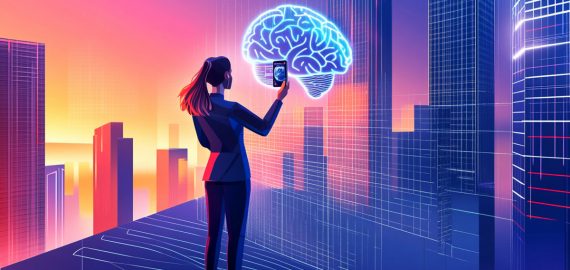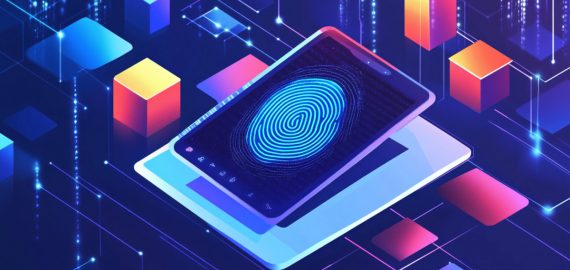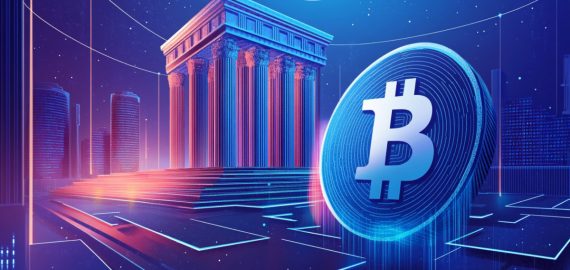AI Agents 101: What They Are, How They Work, And Why They Matter In 2025


In Brief
AI agents are transforming work by evolving from passive tools to autonomous systems, with this article exploring their features, differences from chatbots, leading platforms in 2025, current applications, and future developments toward automated workflows.

By mid-2025, AI agents have shifted from an experimental concept into a critical layer of many enterprise and consumer platforms. They are no longer just add-ons or smart chatbots—they now represent a new model of software execution. Unlike one-time prompts or basic automation flows, agents can understand goals, take initiative, and complete complex tasks by combining multiple tools and steps.
For a deeper look at how this evolution is shaping real-world workflows, explore how AI agents are shaping the future of work in 2025.
This article offers a full breakdown of what AI agents are, how they function, what separates them from other AI formats, and why this shift matters across industries.
What Is an AI Agent?
In the context of artificial intelligence, an AI agent refers to a software system that can perceive its environment, make decisions, and act toward a specific goal—often without requiring further human input after setup. This structure marks a clear departure from standard automation scripts or chat-style AI tools.
AI agents rely on key components:
- Autonomy – acts independently, without requiring step-by-step instructions;
- Memory – retains past actions and data to ensure consistent behavior;
- Multi-step execution – handles complex tasks by executing sequences rather than isolated actions;
- Tool interaction – connects with external APIs, apps, and databases to complete assigned goals;
- Goal orientation – focuses on achieving specific outcomes instead of responding to one-time prompts.
In practice, this means that a well-configured agent can analyze a prompt, decide which tools to use, interact with them as needed, and adapt based on what happens during the process.
How AI Agents Work
The workflow of an AI agent typically includes several stages:
- Input or trigger – a user provides a goal (e.g., “summarize 100 articles” or “track team OKRs”);
- Planning – the agent outlines what actions are needed and in which order;
- Tool usage – it connects to external services (e.g., calendars, search tools, databases) through APIs or plugins;
- Execution – it performs the planned tasks step by step, adapting if something changes;
- Feedback loop – based on results, the agent might adjust its plan or report back with results.
Unlike traditional automation tools that follow a fixed script, AI agents can make decisions during the task, including retrying failed steps, skipping unavailable tools, or updating their approach in real-time.
How AI Agents Differ from Chatbots and Prompt-Based Tools
AI agents are often confused with chatbots or prompt-based assistants like ChatGPT, but there are clear differences.

While chatbots answer questions, AI agents pursue outcomes. A chatbot waits for input. An agent takes input, interprets it as a goal, and acts on your behalf—sometimes over long time frames and using multiple services.
For example:
- A chatbot can help you brainstorm blog topics;
- An agent can generate those topics, check their SEO viability, upload the results into a content calendar, and notify your team on Slack.
This autonomy is what separates agents from traditional scripting. They work across tools and time, enabling use cases that are too complex for one-shot interactions.
Real-World Use in 2025
In 2025, AI agents are being deployed across a wide range of environments:
- Project management: internal agents handle updates, task routing, and deadline adjustments inside platforms like Notion or Asana;
- Customer support: trained on proprietary data, agents resolve support tickets, escalate based on urgency, and update CRM systems;
- Sales and CRM: agents qualify leads, schedule calls, and monitor pipeline metrics by integrating across multiple tools;
- Market research: research agents digest over 100 sources daily, summarizing key trends, sentiment, and outliers for strategy teams;
- Data operations: agents clean large datasets, label content, match schemas, or search for outliers based on contextual patterns.
All these cases share a common logic: agents replace manual, repetitive workflows with autonomous task execution.
Leading Platforms and Tools in 2025
AI agent development has accelerated thanks to large models becoming more accessible, open tools evolving, and enterprises pushing for multi-step execution capabilities.
Here are the most active platforms and systems:
- OpenAI GPTs – customizable agents within ChatGPT that can use files, APIs, or internal tools;
- Google Duet AI – embedded across Google Workspace for automated actions, from summarizing Docs to scheduling meetings;
- Rabbit R1 – a hardware-based assistant running real-world errands using voice and screen commands;
- AutoGPT – open-source framework that enable goal-setting, reasoning, and looping logic;
- Meta AI Agents – integrated into messaging apps like WhatsApp and Instagram to manage interactions and schedules;
- Salesforce Einstein Copilot – CRM-native agents that guide sellers through next steps and data entry;
- Reka Agents – enterprise-grade AI agent infrastructure for chaining complex, distributed tasks across departments.
These tools are not limited to single functions. They act across multiple platforms, learning user behavior over time and refining their logic through feedback.
Current Challenges and Limitations
Despite their growing power, AI agents still face real constraints:
- Long-term memory issues – many systems struggle with retaining context over extended sessions;
- Hallucination risk – agents may misinterpret unclear instructions or invent unsupported data;
- Tool coordination – connecting multiple external systems introduces complexity and failure points;
- Privacy and access – using company data with agents raises questions about data handling and boundaries;
- Compute cost – running agents over time consumes more resources than basic prompt tools.
These limitations are being actively addressed by platform developers and AI research teams, especially in enterprise environments.
What’s Coming Next in Agent Evolution
AI agents are now seen as a foundation for next-generation digital ecosystems. Several trends define where the market is moving:
- Composable agents – One agent can call another, enabling more specialized workflows and decision trees. A strong example is SnapLogic, which offers a visual platform for building composable agents that integrate across enterprise tools and automate complex processes.
- Low-code configuration – Non-technical teams can now build custom agents using drag-and-drop interfaces or templates. Unqork provides a mature no-code platform allowing enterprises to deploy AI-driven workflows without writing code.
- Interface shift – Instead of typing prompts, users assign goals. Agents choose the steps. Pega GenAI from Pegasystems is designed exactly for this: users set objectives, and the system auto-generates and executes full business process flows.
- Agent marketplaces – Platforms are forming where agents are shared, sold, and integrated by companies. One of the notable examples is FuseBase, which curates reusable AI workflows and agent-based automations for creators, teams, and businesses.
- From tools to operating systems – Agents are shaping how entire digital work environments function, including internal systems. Gupshup is embedding AI agents directly into enterprise communication infrastructure, automating messaging and support across global channels.
This shift indicates a broader transformation in how users interact with software. The move is from direct control to goal-based delegation—where people tell systems what they want, and agents figure out the how.
AI Agents Are Becoming Infrastructure
As of 2025, AI agents are no longer considered experimental. They are becoming part of the core software stack for teams, startups, and platforms that require contextual automation. Their ability to link goals to outcomes, leverage tools across ecosystems, and continue working without direct supervision is reshaping how digital work is structured.
According to industry data, approximately 85% of enterprises will use AI agents by the end of 2025, and nearly 96% of surveyed organizations plan to expand AI agent usage over the next year. These tools have already begun improving productivity and driving cost efficiency within business operations.
As AI agents mature, they are driving a broader transition toward goal-based automation—where software no longer waits for manual instructions, but operates with autonomy, memory, and multi-step logic.
These context-aware agents function like digital coworkers, navigating tools, systems, and data to produce real results. Whether embedded in enterprise apps or working as standalone assistants, AI agents in 2025 are laying the groundwork for a future where automation is intelligent, adaptive, and outcome-driven.
Disclaimer
In line with the Trust Project guidelines, please note that the information provided on this page is not intended to be and should not be interpreted as legal, tax, investment, financial, or any other form of advice. It is important to only invest what you can afford to lose and to seek independent financial advice if you have any doubts. For further information, we suggest referring to the terms and conditions as well as the help and support pages provided by the issuer or advertiser. MetaversePost is committed to accurate, unbiased reporting, but market conditions are subject to change without notice.
About The Author
Alisa, a dedicated journalist at the MPost, specializes in cryptocurrency, zero-knowledge proofs, investments, and the expansive realm of Web3. With a keen eye for emerging trends and technologies, she delivers comprehensive coverage to inform and engage readers in the ever-evolving landscape of digital finance.
More articles

Alisa, a dedicated journalist at the MPost, specializes in cryptocurrency, zero-knowledge proofs, investments, and the expansive realm of Web3. With a keen eye for emerging trends and technologies, she delivers comprehensive coverage to inform and engage readers in the ever-evolving landscape of digital finance.


















































